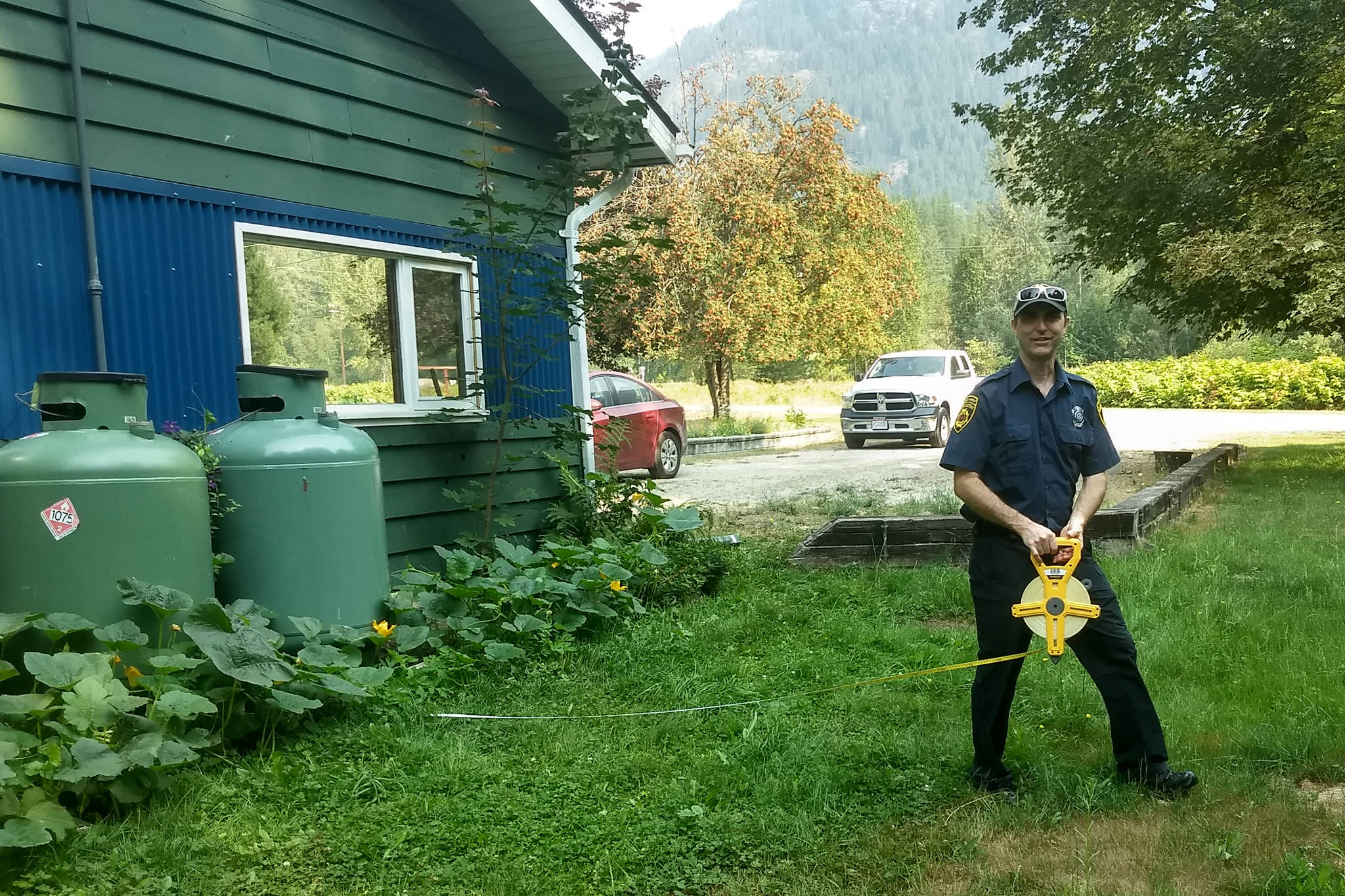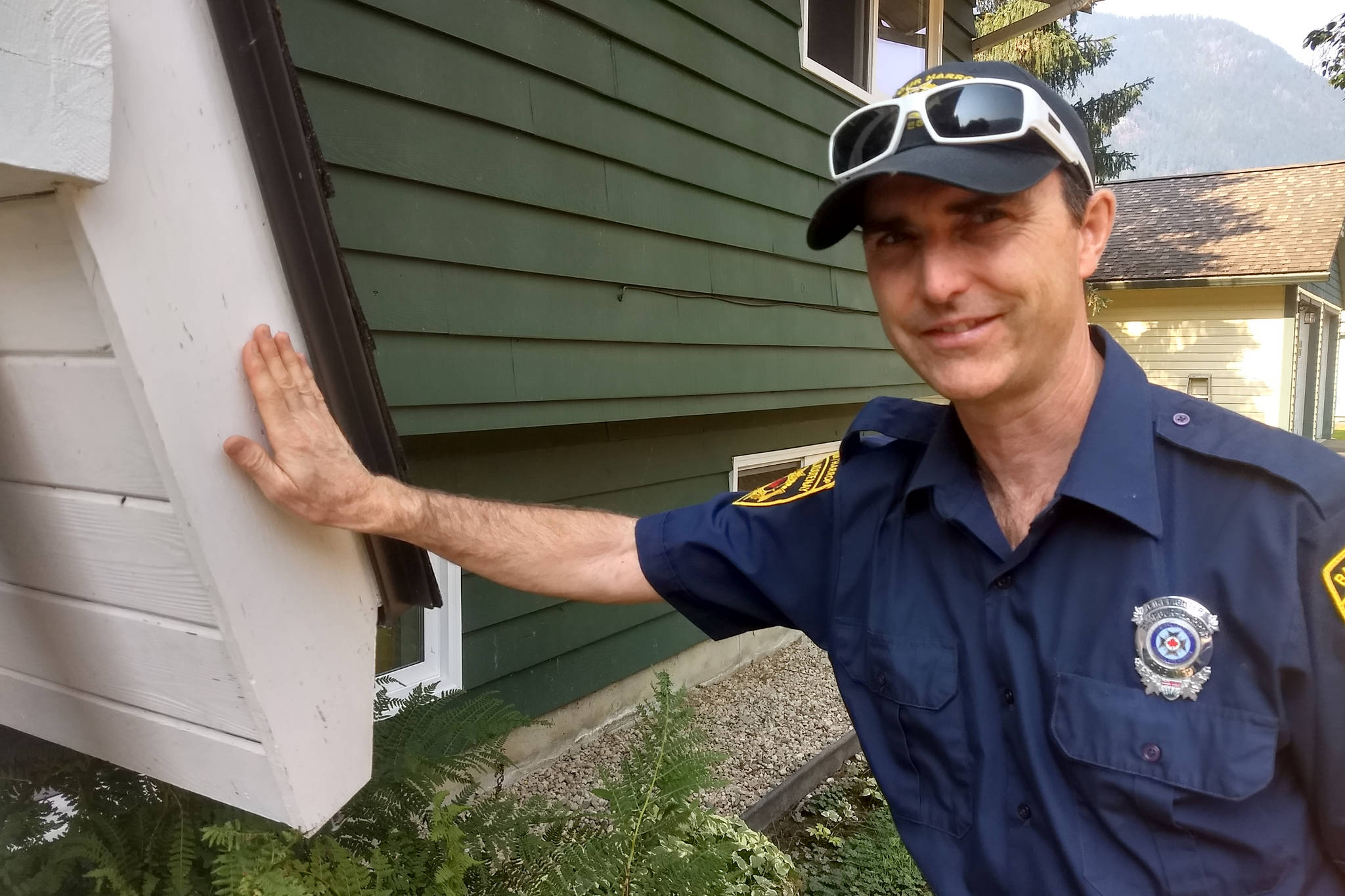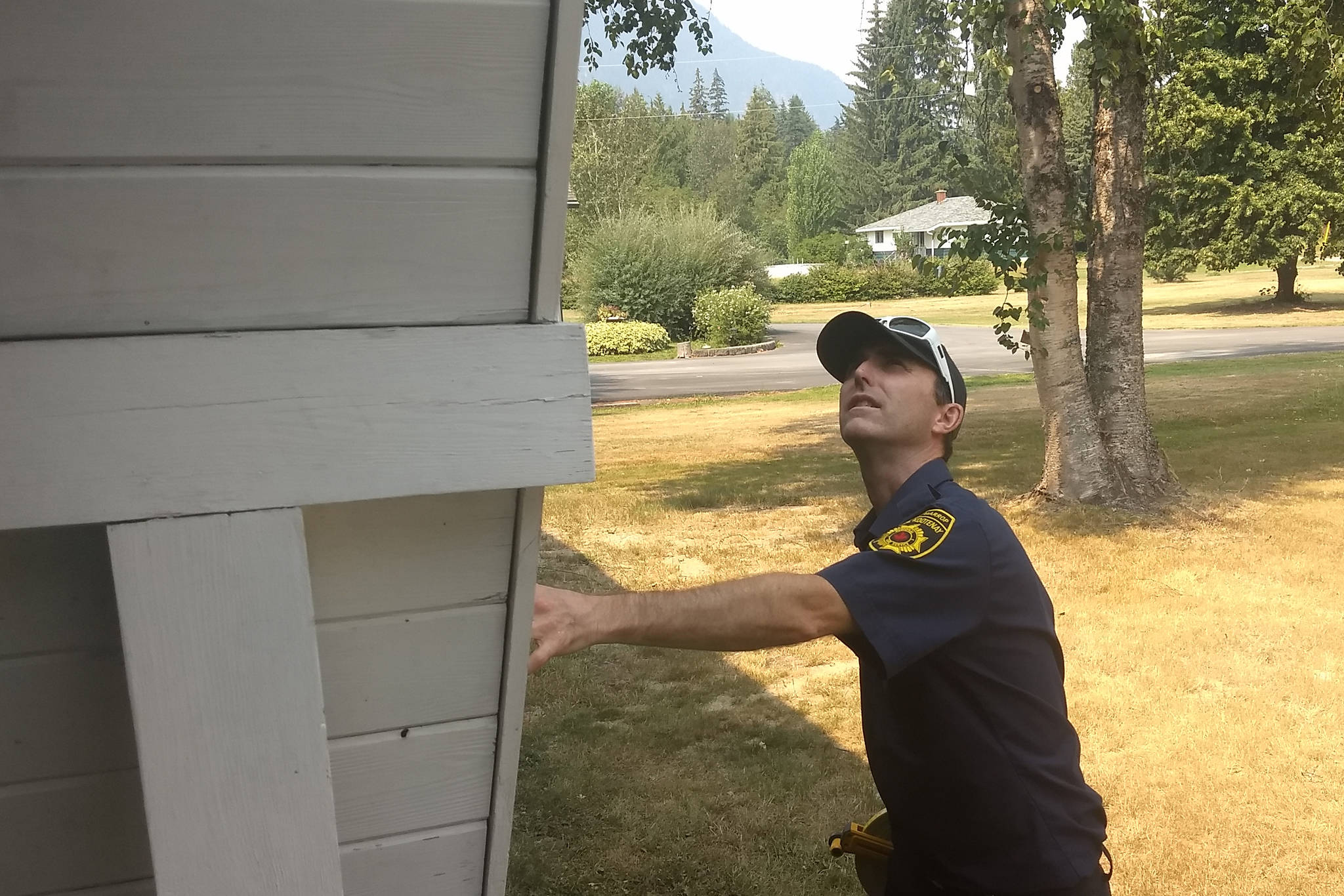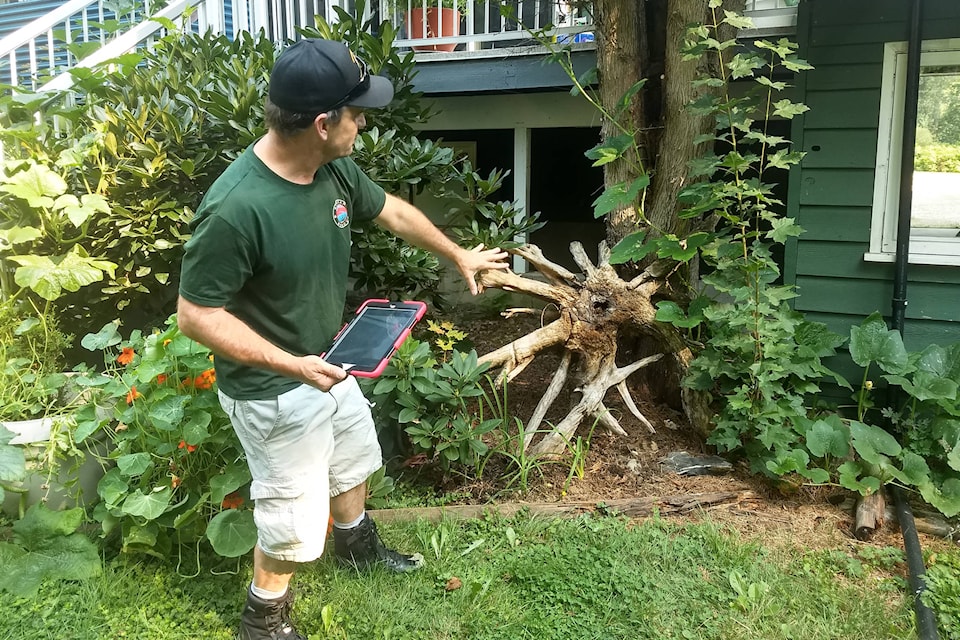“Look here, Andrew,” says Ian Stewart to his partner, pointing at the floor under a table in a corner of my garage. “We have an ember hotel here.”
Two hours ago I would have had no idea what Stewart was talking about. But after a FireSmart assessment from the two men, I know I have a problem.
Stewart, a captain with the Slocan Volunteer Fire Department, and Andrew Doran, a wildfire mitigation specialist and volunteer with the Balfour-Harrop VFD, have just spent the morning inspecting my house for how likely it is to burn to the ground in the case of a wildfire in my neighbourhood.
“The idea of this inspection is to help your house stand on its own,” says Doran. “So if you have to evacuate, you can leave and when you come back, the house is still here.”
So, armed with a checklist, measuring tape and a keen eye for fire behaviour, the two men have spent much of the summer inspecting homes like mine for their fire vulnerability. The FireSmart Home Partners Program is one of the first of its kind run by a regional government, designed to reduce the impact of wildfires.
The men start by checking the roof and working their way down, circling the house a dozen times, looking for problems: the material the roof is made from, firewood stacked against the home, trees and shrubs growing within a few meters of a wall, and cracks, holes and niches where the wall meets the roof or floor. They look for trails a fire might follow to lead to your house, what fuel a fire could find, and where design problems might be issues.
Turns out, the danger from wildfire is not what you think.
“People tend to get afraid of the giant wall of flame,” says Stewart. “But it’s not necessarily the big wall of flame that gets the house. If the fire is more than 30 meters away from the house, it’s unlikely your siding will ignite from the heat.”
The real problem is a lot smaller.
“Studies have found that 50 per cent of homes were lost to embers,” says Stewart. “When they attached infrared cameras to helicopters studying wildfires, they learned that embers can travel up to ten kilometres ahead of the forest fire. You can’t see them through the smoke, or in daylight, but you can see the ember storm in infrared and it is literally a blizzard of fire.”
Those embers gather in little places, like wood chips and bark mulch on the ground, and cracks in the siding. Or in hidden corners in garages.
Which brings us back to the “ember hotel.” Air currents have allowed fine fuel-leaves, dried plant matter, and dust to drift into the corners of the garage. And that’s exactly where embers like to go too.
“You have to think like an ember,” says Stewart. “Embers can defy gravity, they move up and down and sideways on the air currents. They can crawl into any and every space and crevice imaginable.”
And that’s where the problem starts.
“Fires start the same way you build a campfire,” says Doran. “You start with paper, build it up with small sticks, then larger stuff. What we do is look for ways to eliminate that building process, before it gets to the bigger stuff — which is your home.”
The good news is there are many ways to reduce the opportunity for embers to find those tasty little fuel piles. For my house, it means replacing the dry wood where a wall meets the roof with fire-resistant board. I should look at filling in cracks and holes in the soffit, replacing vinyl gutters with metal, and putting metal trim along the roof edge. It’s clearing away the mulch from the base of my house, moving plants and shrubs two metres away from outside walls, and removing a creosote-timber retaining wall.
Among other things. Because at the end of the inspection, there’s a laundry list of work for me to do to get a FireSmart certification.
“People can get overwhelmed a little bit, so we say, start with one wall. It is a voluntary program, so why not do everything you can to mitigate just one wall?” says Doran.
“It can even be as simple as cleaning out your gutters more than once a year, or moving a pile of firewood. But the idea is to get started,” says Stewart. “It may take a while to do that. We don’t expect homeowners to call us back in two weeks and say ‘hey we did all this stuff.’
“It may take a year or two. But when they do call, we can come back and check it off they get issued a certificate.”
That certificate can be a path to saving money, as insurance companies are starting to recognize the program, offering homeowners discounts on their fire insurance.
But the men say insurance or not, interest in the inspections is growing.
“We live in a wildland-urban interface, like a lot of places in the interior of BC,” says Doran. “And the Kootenays are in a red zone right now. People smell smoke in the air and say ‘hey what can I do?’”
People generally react positively to the suggestions, says Doran.
“It depends on how much there is to do. Most people take it very well,” he says. “If they’re the type of person to book an assessment, they’re already thinking about it and there are things they know they have to deal with.”
It can be frustrating for the homeowner who’s just built a new wood shed near their house or re-sided their home with vinyl, but for the most part, people are keen.
“We had one homeowner re-roof three buildings on their property, at pretty significant expense,” says Stewart.
But the inspection, and the program, comes with no financial commitments.
“We’re hopfeul people will try and make the effort to complete all these things and get their certificate,” says Doran. “But we also are happy to give out information and even if they don’t get everything done, they’re thinking about it and moving in that direction.”
At the end of the inspection, the two firefighters assess how prepared our family is for an emergency. Whether we have a communication strategy, evacuation plan, list of documents for insurance, and if we know what steps to take if we’re put on evacuation alert.
You think you’ve heard it all, but there are simple things — like moving flammables like door mats and propane tanks away from the house if there’s an evacuation alert, and closing windows if we’re forced to leave.
The program also encourages neighbours to work together to protect the larger community.
Because the bottom line is, if a fire should start burning up the valley, we’re likely on our own.
“As eager as the local fire department is to help you out, they will have a very limited capacity to help, even if other fire departments are coming in,”says Stewart.
“How many houses do you think the volunteers can handle? One, maybe two with help. So the more prepared you are to save your own home, the more they can do.”
The program is available to all residents of the RDCK, Castlegar, Creston, Salmo, Kaslo, Nakusp, Silverton, and Slocan. If you’d like your home assessed, contact the RDCK at 250-352-8177.
Or, you can visit the RDCK’s Firesmart Home Partners Program .



